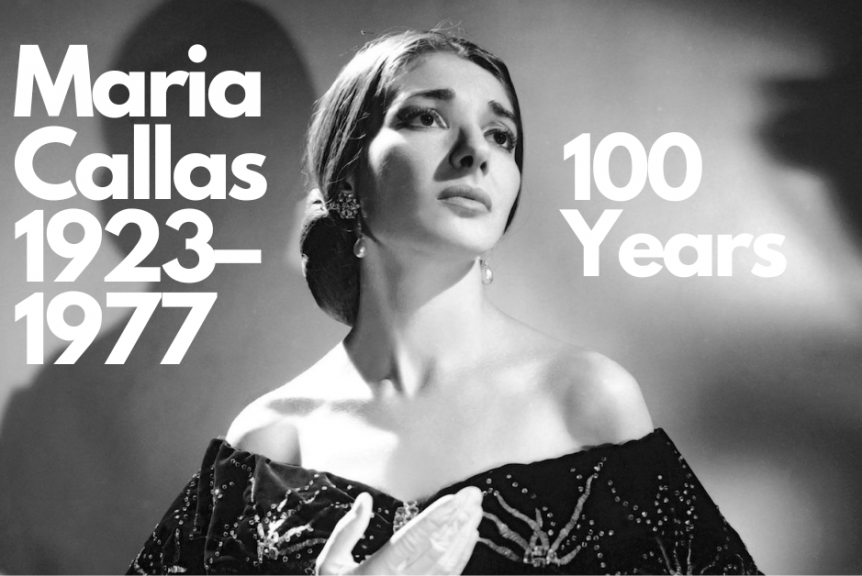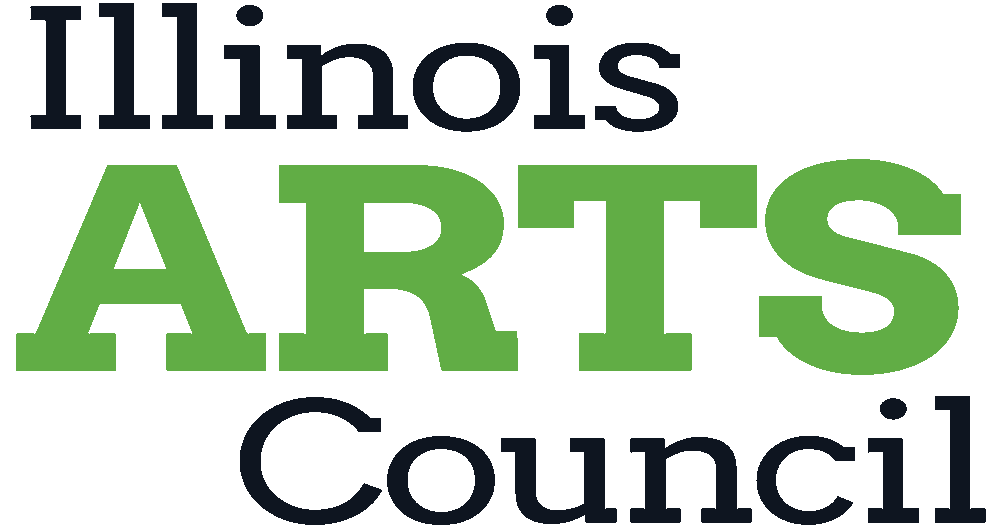Maria Callas: A Century of “La Divina”

“I am not an angel and do not pretend to be. That is not one of my roles. But I am not the devil either. I am a woman and a serious artist, and I would like so to be judged.” – Maria Callas
There is no figure in classical music quite so extremely revered and reviled as Maria Callas (1923–1977). The number of tributes that have sprung up across the globe in honor of the legendary soprano’s centenary this December demonstrate the lasting hold Callas’ penetrating voice, captivating stage presence, and fascinating life have on the culture.
Of these tributes includes a forthcoming biopic starring Angelina Jolie as Callas, written by Steven Knight (Peaky Blinders) and directed by Pablo Larraín (Spencer). Though a release date has not yet been announced, the film, Maria, is reported to cover the diva’s final reclusive years in Paris in the 1970s. Author Daisy Goodwin (whose fictionalized book on the young Queen Victoria inspired the PBS series) has also published a new book on Callas that aims to distinguish the artist from her headline-grabbing personal life. In Athens, a new museum has opened devoted entirely to the Greek–American singer, while in London some of Callas’ most iconic costumes are on display at the Victoria & Albert Museum. In the realm of high-tech, a 3-D hologram of the singer will “perform” with a live orchestra in Melbourne, Australia, while closer to home, you can watch a newly remastered and colorized film of Callas’ legendary debut at the Paris opera house in 1958 in cinemas this December.
So what is it about Maria Callas that has inspired such outpourings of admiration nearly 50 years after her death? Let’s take a look at her remarkable life story and some of her most iconic performances to learn why.
Maria Callas was born in New York City on December 2, 1923, to Greek immigrant parents. Her father, a pharmacist named George Kalogeropoulos, had anglicized the family name to “Callas” upon moving to the United States. Her mother, Litsa, hated New York. As an escape, she pushed her two daughters into music, forcing Maria into radio competitions from the age of 12. By 1937, Litsa and George’s marriage had deteriorated such that Litsa decided to move back to Athens with her two daughters. There, Maria began to study singing in earnest under the tutelage of Elvira de Hidalgo at the Athens Conservatoire. (Because the school only accepted students aged 17 and up, the 13-year-old Maria had to lie about her age to gain admittance.) Hidalgo was a light coloratura who taught Callas bel canto technique, which centers vocal agility, dynamic finesse, and supreme legato. This flexibility paired with Callas’ naturally dramatic voice created a unique sound that she wielded in a wide variety of repertoire.
Callas was a quick study and was soon contracted to sing secondary roles at the newly established Greek National Opera. This came in the midst of World War II, when Greece was first occupied by the Italians and then by the Germans, both of whom needed their opera. While many Athenians starved, Callas entertained the occupying forces to earn what little money and food she could for her and her family. During the Greek Civil War that followed soon after WWII, the Communist Party forced Callas out of Athens for having sung and fraternized with the Italians and Germans. Fearing for her life, she looked westward.
In September 1945, her father wired her $100 so she could move back to New York. She spent two years angling for singing contracts, even going six months without work. Finally, her big break came in 1947 when she appeared in the title role of Amilcare Ponchielli’s La Gioconda at the storied Arena di Verona under the baton of Maestro Tullio Serafin. Not only was this a turning point in her career, but it was in Verona that she met Giovanni Battista Meneghini, an Italian millionaire 30 years her senior. They married two years later and moved into a villa on the border of Lake Garda. Free from money woes, she was able to pursue her career without limitations.
Maestro Serafin became an important mentor for Callas, giving her opportunities when others would not. In 1949, Serafin hired Callas to sing Brünnhilde in Wagner’s Die Walküre—one of the most dramatic roles in the operatic repertoire. Meanwhile, he was also preparing Bellini’s I puritani at the same theater in Venice. When the soprano singing the lead role of Elvira fell ill, he called in Callas to sight read the part. Somehow, even in the midst of singing Wagner, Callas was able to bend her voice into one of the lightest roles in the bel canto repertoire. Though she doubted her ability to learn the role in time and navigate the opposing vocal demands of the two operas, Serafin had full faith. Callas ultimately agreed to step in for the ailing soprano, learning the role in just one week.
It was in these bel canto roles that Callas truly made her mark, leading to a revival of the bel canto repertoire. These operas by Donizetti, Bellini, and Rossini had largely been neglected in the first half of the 20th century, as they required both extreme virtuosity and vocal power, which Callas had in spades. The heroines in these operas—women in love, betrayed, or driven insane—also spoke to the natural actress in Callas. One such heroine was the title role in Bellini’s Norma, which would become her calling card. Of the 600 full operatic performances Callas gave in her career, she performed Norma no less than 89 times.
By the age of 29, Callas was at the height of her vocal powers. There was just one thing holding her back: her appearance. Though she maintained that she was not overweight, others in the industry criticized her for her size, saying it prevented her from being hired to play leading roles in the world's top theaters. Between 1953 and 1954, she lost 80 pounds—some say through ingesting a tape worm, while Callas insisted it was through adhering to a strict diet.
Her extreme weight loss made her already striking facial features even more prominent, which helped her facial expressions carry in a large theater. She also drew comparisons to the waifish Audrey Hepburn, enhancing her glamourous public image. However, some believe her weight loss contributed to her premature vocal decline, as she now had less body to support her sound. While this may be true to a certain extent, her vocal issues likely also stemmed from singing overly strenuous repertoire in her teens and 20s.
Callas’ star burned bright and hot. In the 1950s and early ’60s, she was arguably the world’s greatest diva, the first operatic superstar since Enrico Caruso, a household name among even non-opera fans. The inherent power of her voice and face to move the audience was just a part of the reason. Her notoriously fiery temperament off stage and dramatic personal life made headlines as much as her singing did.
One such headline-grabbing story was her nine-year relationship with Greek shipping tycoon Aristotle Onassis, whom she met in 1957. Onassis didn’t care much about music and did not like sharing her with the stage, and Callas, tired from working at a frenetic pace for the last decade, was happy to take time off to cruise around the Mediterranean. However, the more time she spent away from singing, the worse her vocal problems became. Already a nervous performer, she became even more anxious when she could no longer rely on her voice. Eventually, performing became a terrifying prospect. After a two-year absence, director Franco Zeffirelli at last convinced her to return to the stage in 1964 to sing Tosca and Norma in London, Paris, and New York. Little did audiences know that these would be her last full operatic performances.
In 1968, Onassis famously left Callas to marry Jackie Kennedy. Callas reportedly said, “for nine years I’ve given up a hell of a career for nothing.” She attempted a comeback concert tour in 1973. Her adoring fans lauded her, but the voice was noticeably frayed. She eventually retreated to her Paris apartment for the last years of her life, listening to old recordings of herself and reminiscing about her glory days. She died of a heart attack in her Paris apartment on September 17, 1977.
Narratives about Callas have often cast her in relation to the men she was seeing, her alleged feuds with other women, her being difficult to work with, or her weight. While these aspects of her life are certainly part of her story, concentrating on them unduly obfuscates the artist and woman she was and reduces her to a tragic trope. Hopefully, contemporary dedications can begin to take a more critical eye at how Callas’ life story has been told and the influence sexism has played in it. Instead, the best way to get to know her is through her singing, as she undeniably threw every ounce of herself into everything she did—because she would accept nothing less.



